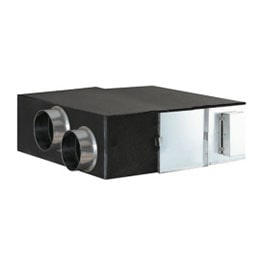-
With the ongoing pandemic, many of us are spending more time indoors. This lifestyle shift has led us to pay even more attention to maintaining better air quality. Which begs the question: why is ventilation essential to maintain good indoor air quality? Indoor air contains fine dust, viruses, bacteria, mold, and harmful gases that cling to building materials, interiors, and furniture. Indoor fine dust can be removed with an air purifier, but other harmful substances must be discharged through ventilation. LG offers highly efficient ventilation solutions to counter these undesirables, and we will introduce some of the most frequently asked questions about energy recovery ventilation solutions below.
-
Question 1. What is the difference between natural ventilation and mechanical ventilation?
Natural ventilation (NV) refers to ventilation that uses pressure differences to create airflow. It can be done quickly by opening windows or doors to initiate circulation. However, there are some downsides to NV in our modern era. It is not always easy to open doors or windows in urban areas due to security, privacy, and noise concerns. Furthermore, air pollution is one of the significant factors that hinders occupants from natural ventilation. In addition to these factors, another reason occupants reluctant to undertake natural ventilation, especially in the cold season, is energy loss. Occupants can usher fresh air into the building with mechanical ventilation while reducing energy loss.
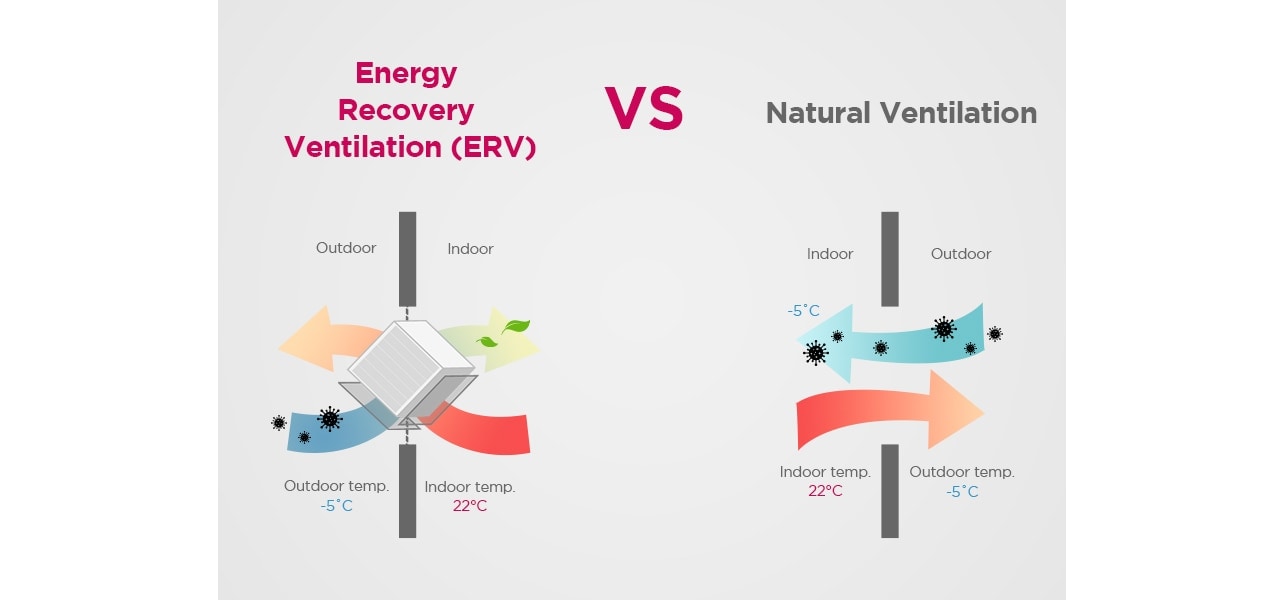
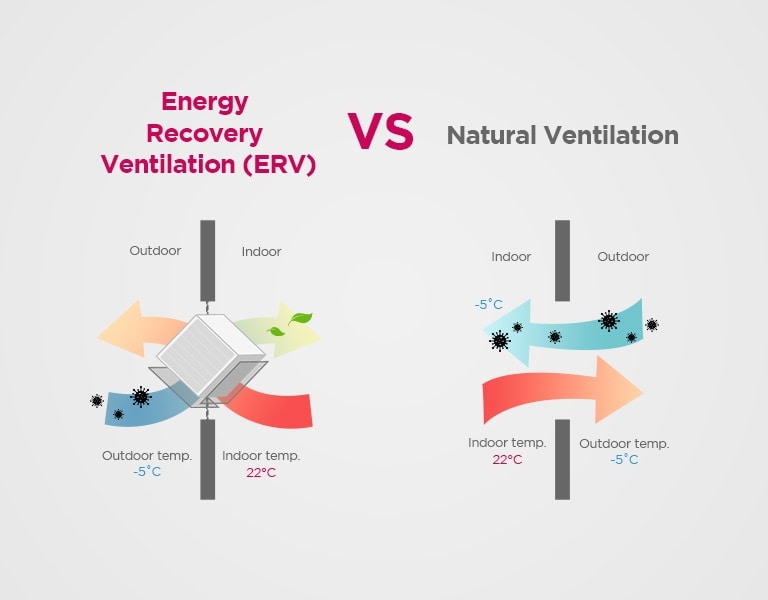
-
*The air filter(Model number.AHFT035H0performance was tested by an ISO 16890-1:2016 Air Filter Test by using DEHS and KCl aerosol with the condition of the airflow rate of 0.278m/s, air temperature of 23-24C. and relative humidity of 44-49%,The result was an ISO rating of ePM1 75%.Results may vary depending on the environment
-
Question 2. What are the types of mechanical ventilation?
There are three types of mechanical ventilation; supply ventilation, exhaust ventilation, and balanced ventilation. Supply ventilation creates an additional air exchange by using a fan to draw air into the indoor space. The fan increases the average indoor air pressure, increasing the forces that tend to push air out of the room. Rooms such as those used as intensive care units use supply ventilation to prevent the introduction of contaminants from the adjacent spaces. Exhaust ventilation creates additional air volume by using a fan to blow air out of the room. The fan lowers the average indoor air pressure, increasing the force that pulls air into the room. The pollution level is not the same everywhere within the building. In some rooms, such as toilets, exhaust ventilation is used to prevent the spread of odors.
As its name indicates, balanced ventilation uses two fans; one drawing air in and another pushing an equal volume of air out. The average air pressure of the house is unaffected. Balanced ventilation offers the location control advantages of both exhaust and supply ventilation.
Additionally, balanced ventilation provides an opportunity to include a heat exchanger between the outgoing air and the incoming air to precondition the incoming air. A balanced ventilation system with a heat exchanger usually comes in either a heat-recovery ventilator (HRV) or energy-recovery ventilator (ERV).
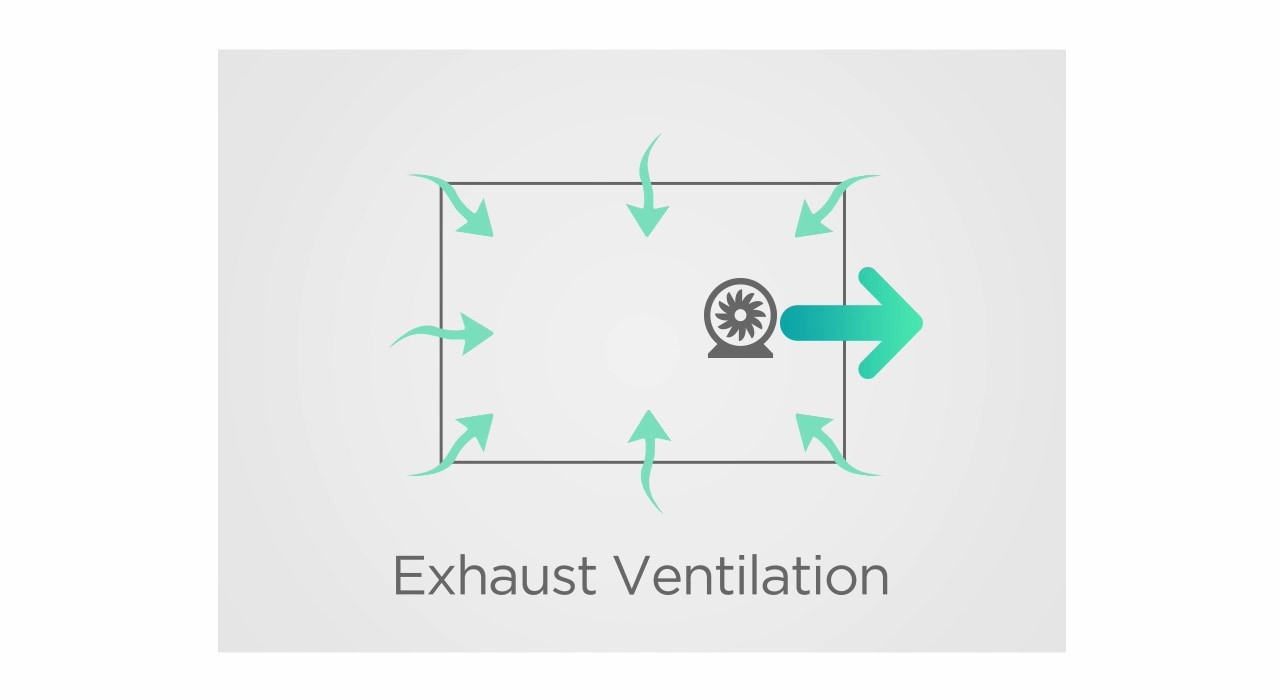
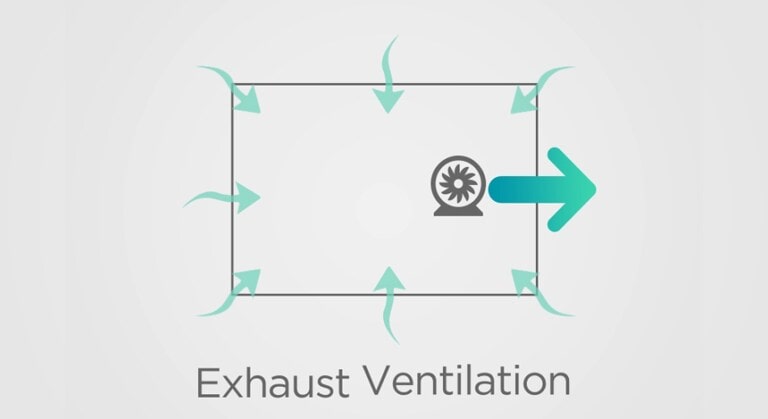
-
Question 3. What is the difference between an HRV and ERV?
The primary difference is that an HRV transfers heat while an ERV transfers both heat and moisture. An ERV performs the same heat exchange functions of an HRV while also incorporating a technology to transfer humidity between air streams. Utilizing a process called “enthalpy transfer,” the ERV extracts water vapor from the moister air stream and adds it to the drier air stream. In summer, humidity is removed from incoming air and dumped into the outgoing airstream, reducing the effect of outdoor humidity on the indoor environment. In winter, the process reverses, helping sustain humidity levels to prevent overly dry indoor conditions.
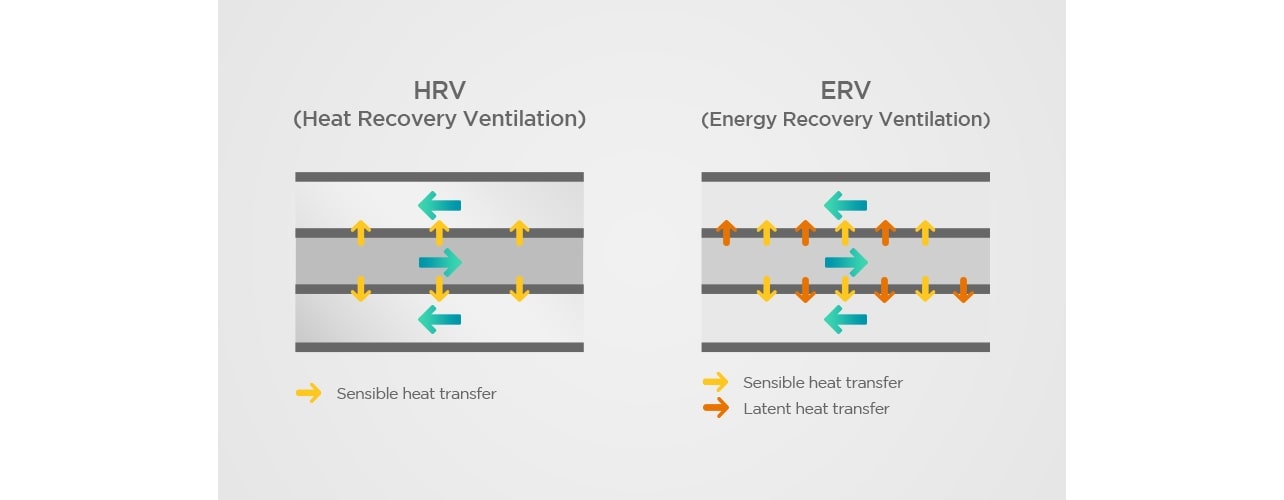
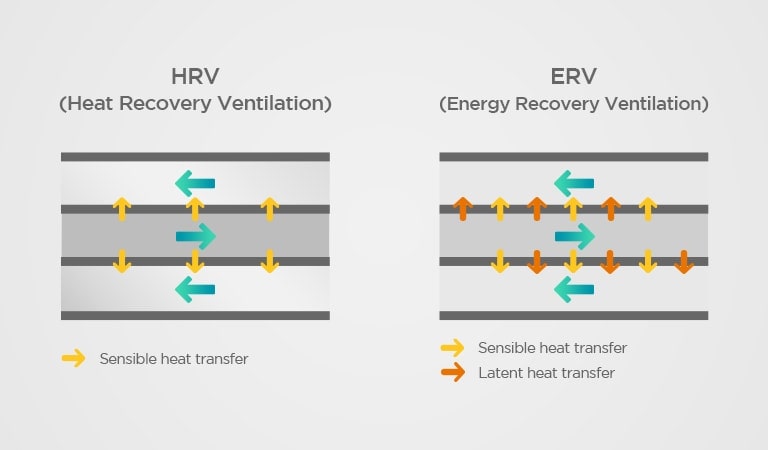
-
What makes a difference between these heat exchangers are the materials comprising them. HRV is mainly comprised of aluminum and polypropylene while ERV is comprised of paper and other components. The latter has higher efficiency as it recovers the usually discarded latent heat.
-
Question 4. How much energy can you save with ERV while getting fresh outdoor air?
The ERV has a heat exchanger mechanism that saves cooling and heating energy during ventilation. Not only the heat exchanger but LG ERV’s differentiated functions (Night Time Free Cooling, Automated Seasonal Operation, Suspended Operation. CO2 Auto Operation ) make it more energy-efficient. Using LG ERV can result in up to 40% more energy savings than natural ventilation.
*Based on an LGE internal simulation of an LG air conditioner and a LG ERV operating together, the heat exchanger saves up to 24% more energy than natural ventilation and works with other LG ERV features to provide total energy savings up to 40%. Results may vary depending on the environment. Simulation Conditions: Based on ERV (1,000CMH) + Multi V 5 (12hp) / 455m2 office space, Cooling 26℃ / heating 21℃, e Quest 3.65 / Daily operation in winter conditions.
*‘Automated Seasonal Operation’ ‘Night Time Free Cooling’, and ‘Suspended Operation function’ on remote control.
-
Question 5. Why is it smarter to ventilate with LG ERV?
The ERV comes packed with many nifty functions that help regulate temperature and air quality by integrating inherent climate conditions to deliver an optimal user experience while enhancing energy efficiency. Night-time Free cooling mode is one such feature that exploits air temperature differences by funneling cool evening air indoors during the summer months. Likewise, in the Automated Seasonal Operation mode , LG ERV senses the outdoor temperature and changes the operation mode automatically following the weather condition. This mode enables a bypass operation during the mild spring and autumn months, where the outdoor air temperature and humidity are adequate. The fresh outdoor air is introduced directly to the indoor space without exchanging heat with the outgoing indoor air – leading to cost-cutting.
The ERV works in tandem with other devices such as air-conditioning units to overcome abrupt transitions between extreme temperatures. With such functions and by interlocking the ERV with the air conditioning system, it is possible to save energy while heating/cooling and ventilating the indoor space.
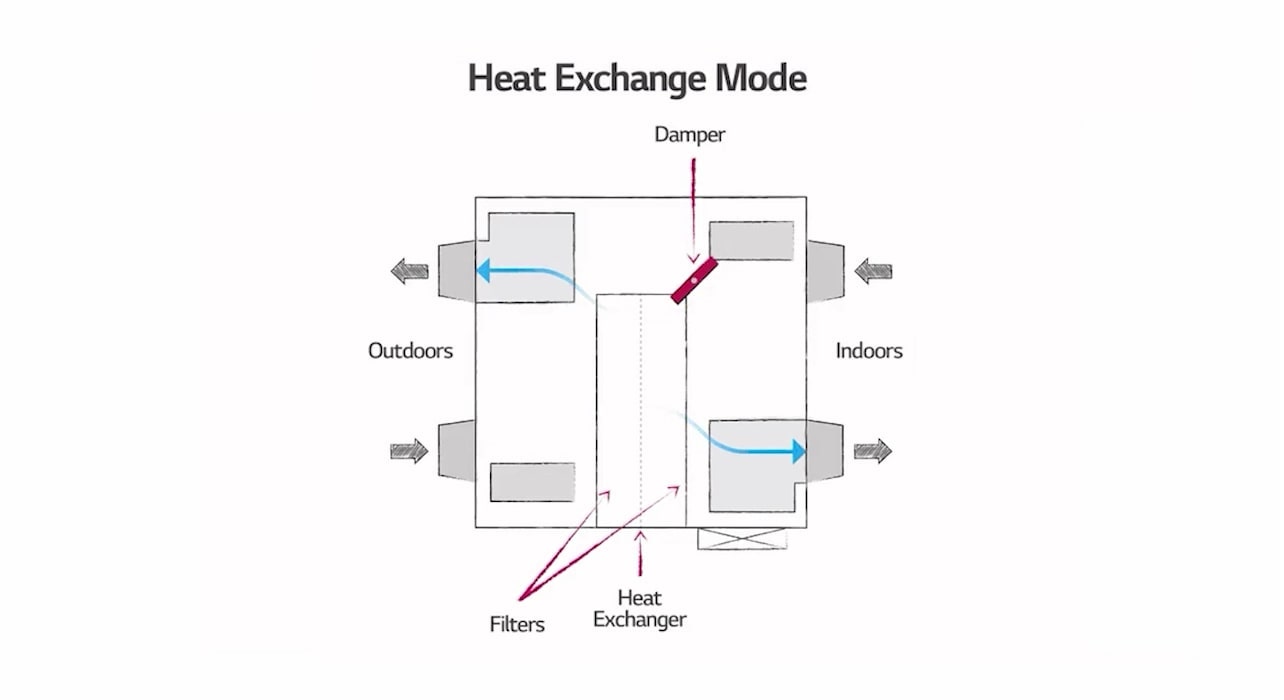
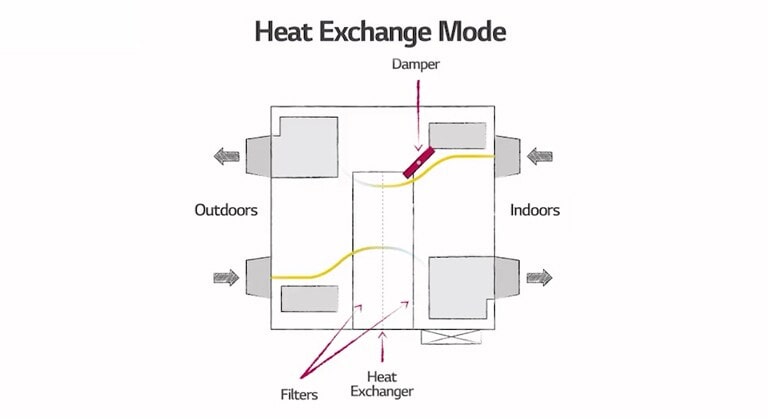
-
Question 6. Is it possible to keep indoor air healthy with the ERV?
LG ERV ventilates and provides healthy indoor air through air filters to remove various harmful substances like dust particles and microbes in the air. It is also possible to add a medium filter for further enhanced results. Constant efforts are undertaken to push the envelope in this area, and currently, an ISO-rated Air filter for ERV & ERV DX is applicable. Tests results based on ISO 16890-1 show that the outdoor air (OA) medium filter currently applicable with the ERV is on par with a MERV 14 or F8 for comparison.
*ISO rate air filter is optional. ISO rating according to ISO 16890:2016.
*The air filter (Model number: AHFT035H0) performance was tested by an ISO 16890-1:2016 Air Filter Test by using DEHS and KCl aerosol with the condition of the airflow rate of 0.278 m³/s, air temperature of 23-24 °C, and relative humidity of 44-49%. The result was an ISO rating of ePM1 75%. Results may vary depending on the environment.
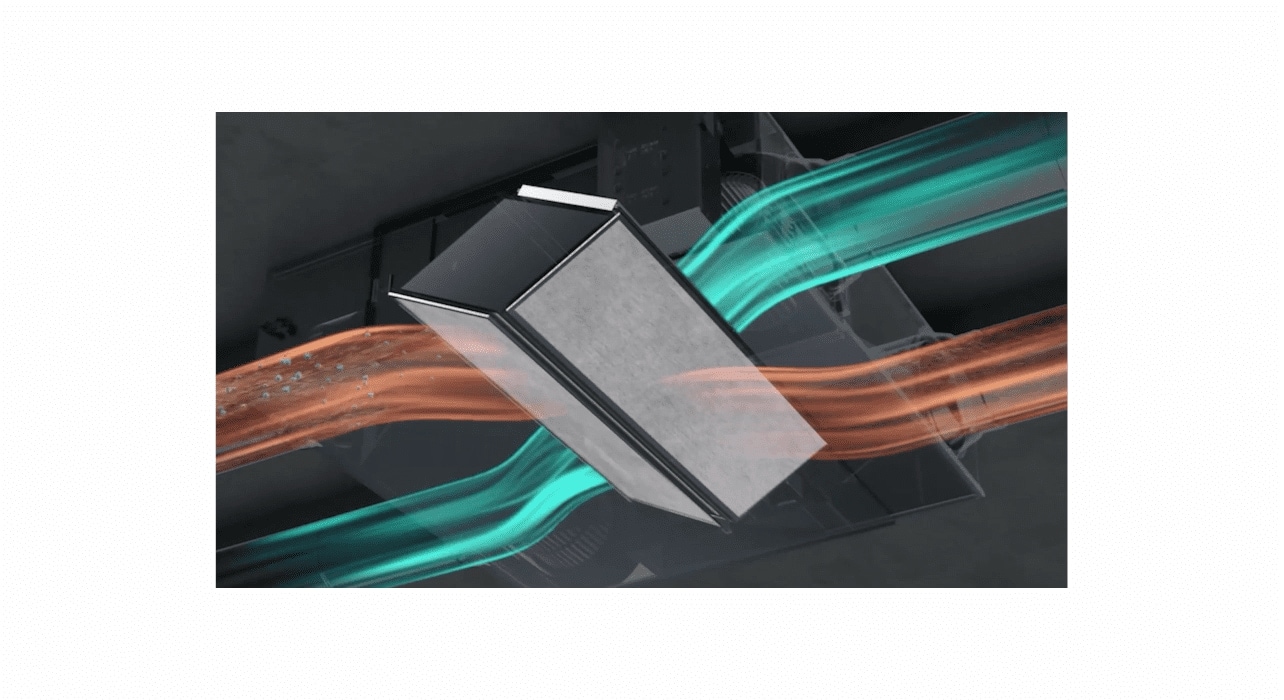
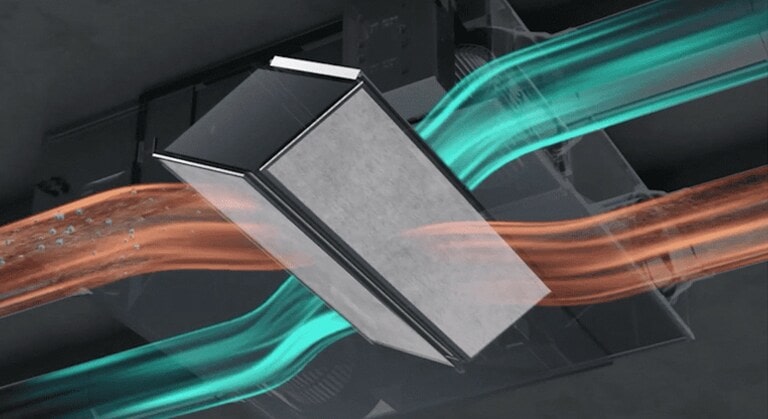
-
Throughout history, humans have endeavored to design living quarters efficiently in coordination with their environment's climate and geographical features. Comfort is naturally a key component of our architecture and has proven to drive the technological advancement of our homes. In recent years, improving living conditions with safe, clean, and thoroughly ventilated indoor environments has become more critical than ever. Ventilation is essential to maintaining a hygienic indoor environment. Building occupants appreciate the comfort and safety offered with adequate air ventilation. Consider designing buildings with LG ERV systems that provide fresher and cleaner air while saving energy and reducing operating costs.
Please click the 'INQUIRY TO BUY' banner below to contact your local LG office for further information on solutions and products.







